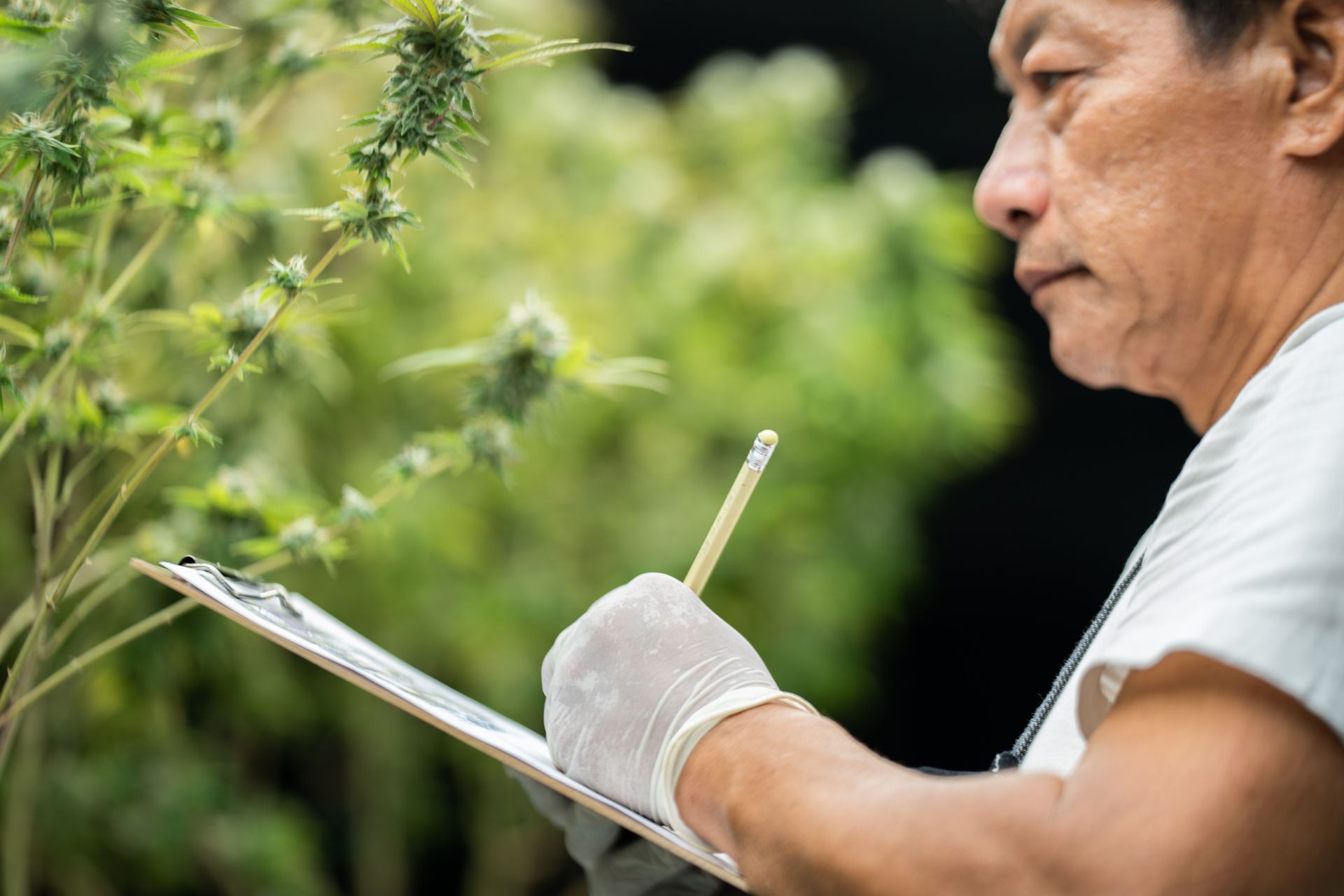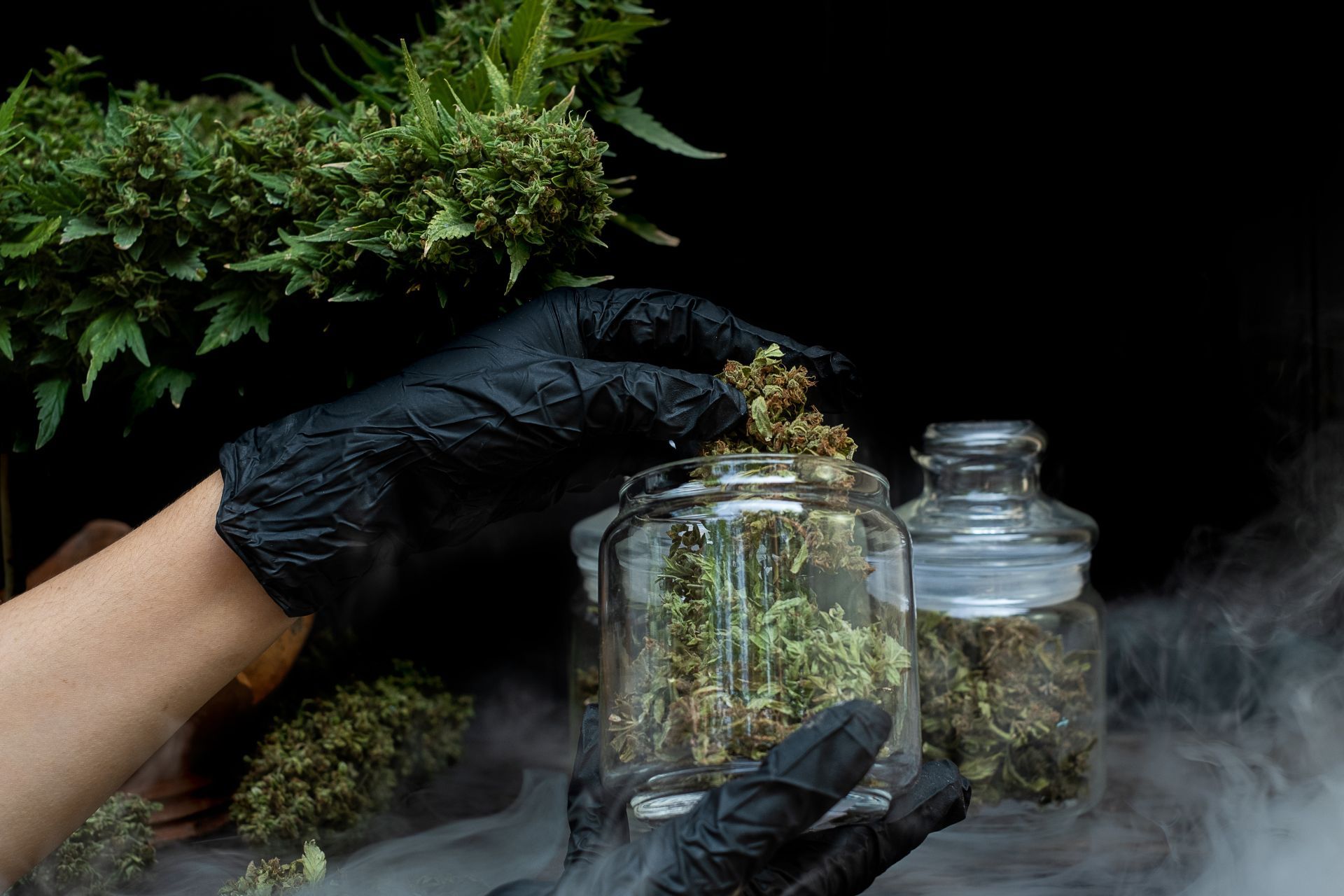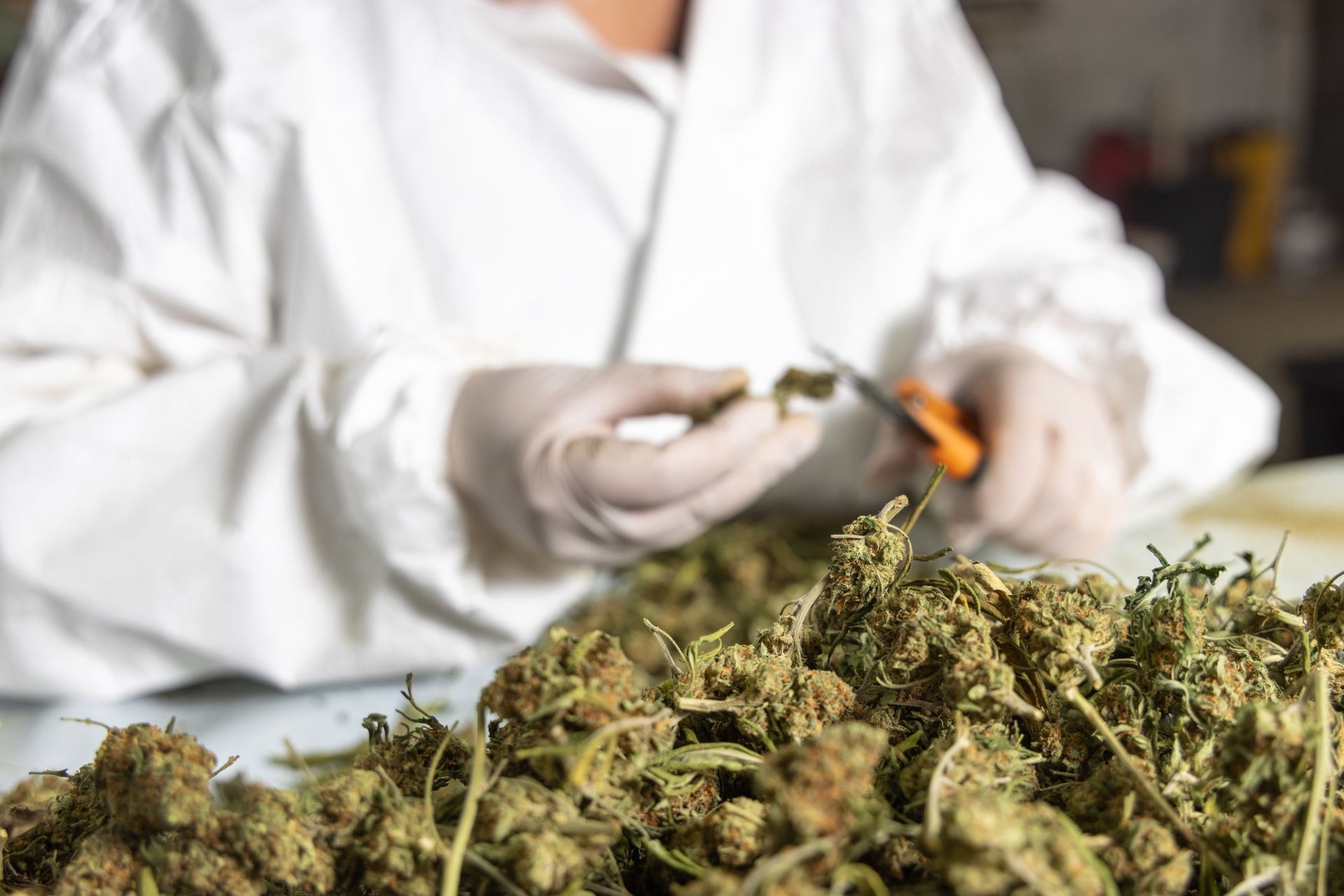How Natural Disasters Affect Cannabis Growers and Their Operations
See How We're Different
or call us: (215) 653-8411
Natural disasters are becoming an increasingly significant challenge for cannabis growers worldwide. From wildfires to storms and droughts, these events not only threaten crop yields but also disrupt entire supply chains and impact the economic viability of cannabis operations. Understanding the multifaceted effects of natural disasters on cannabis cultivation is essential for growers, investors, and policymakers aiming to build resilience in this rapidly evolving industry.
California’s cannabis industry, one of the largest in the United States, provides a stark example of these challenges. In 2020 alone, wildfire smoke exposure posed a potential economic loss between $970 million and $1.44 billion for licensed cannabis growers in the state, highlighting the severe financial risks associated with natural disasters in this sector. Such data underscores the urgency for growers to adopt adaptive strategies and sustainability practices to mitigate these impacts. For more details on wildfire impacts, see this study on wildfire smoke and crop impacts.
Wildfires: A Growing Threat to Cannabis Cultivation
Wildfires have become one of the most destructive natural disasters affecting cannabis growers, especially in regions like California and the Pacific Northwest. Beyond the immediate threat of flames, smoke exposure has emerged as a critical factor that can compromise crop quality and yield. Research shows that exposure to wildfire smoke is actually a stronger predictor of reported crop damage than mere proximity to the fire itself, emphasizing the pervasive nature of smoke-related harm.
The economic consequences of wildfire smoke are staggering. In 2020, California’s licensed cannabis industry faced potential losses nearing $1.44 billion due to smoke contamination affecting the quality and safety of the product. This financial impact not only affects individual growers but also ripples through the supply chain, causing price volatility and supply shortages. The situation is further exacerbated by the fact that many cannabis strains are particularly sensitive to environmental changes, making them more vulnerable to the adverse effects of smoke and ash.
To combat these challenges, some growers are investing in advanced filtration systems and relocating operations to less fire-prone areas. However, these solutions come with increased costs and logistical hurdles. The wildfire crisis also highlights the need for comprehensive risk management strategies tailored to the cannabis industry’s unique vulnerabilities. Growers are increasingly looking to collaborate with environmental scientists and agronomists to develop best practices that not only mitigate the effects of smoke but also improve resilience against future wildfires. For an in-depth look at how wildfire smoke affects cannabis crops, visit this research article on wildfire smoke exposure.
Moreover, the psychological toll on growers cannot be overlooked. The anxiety of losing an entire crop to an unpredictable wildfire season weighs heavily on many cultivators, who often pour their life savings into their operations. The stress is compounded by the uncertainty of regulatory changes and market dynamics, which can shift rapidly in response to environmental disasters. As a result, some growers are turning to community support networks and mental health resources to help navigate these challenges, fostering a sense of solidarity in an industry that is often isolated by its unique circumstances. The resilience of these communities is a testament to their commitment to not only survive but thrive in the face of adversity.
Severe Weather Events and Their Impact on Outdoor Cannabis Cultivation
Outdoor cannabis and hemp growers face a broad spectrum of climate-related threats beyond wildfires. In 2022, many cultivators encountered severe weather events including droughts, heatwaves, hurricanes, and storms. These conditions not only reduce crop yields but also create hazardous working environments, prompting the implementation of new health and safety protocols for employees. Droughts, in particular, pose a significant challenge due to the high water demands of cannabis cultivation. Outdoor grows can require over 4 gallons of water per square foot each day, placing enormous pressure on local water resources, especially in arid regions. This intense water usage raises sustainability concerns and calls for more efficient irrigation practices and water conservation measures. Innovative solutions such as rainwater harvesting and drip irrigation systems are becoming increasingly popular among growers seeking to mitigate the effects of drought while ensuring their crops receive the necessary hydration.
Storms and hurricanes also threaten outdoor cannabis operations by causing physical damage to crops and infrastructure. The disruption of supply chains during such events can delay product delivery and increase operational costs. Industry experts emphasize the importance of storm preparedness and resilient infrastructure to safeguard crops and maintain continuity. Growers are now investing in advanced weather forecasting technologies and developing contingency plans that include securing crops with protective netting and reinforcing greenhouses. These proactive measures not only help in minimizing damage but also ensure that cultivators can respond swiftly to the unpredictable nature of severe weather.
Moreover, the impact of climate change is not just limited to immediate weather events; it also influences long-term agricultural practices. As temperatures rise and weather patterns shift, growers are increasingly faced with the challenge of adapting their cultivation techniques to suit new environmental conditions. This could mean selecting more resilient cannabis strains that can withstand extreme temperatures or implementing crop rotation strategies to enhance soil health and reduce pest pressures. The ongoing evolution of outdoor cannabis cultivation in response to these challenges highlights the resilience and adaptability of the industry, as well as the necessity for continuous research and development in agricultural practices.
Learn more about how severe weather impacts cannabis cultivation in this Cannabis Business Times report and this expert insight on storms and cannabis risks.
Energy Consumption and Environmental Footprint of Cannabis Operations
While natural disasters pose direct threats to cannabis cultivation, the industry’s environmental footprint also contributes to broader climate challenges. Indoor cannabis cultivation, in particular, is highly energy-intensive. Studies reveal that producing one pound of dried cannabis flower indoors can consume up to 1,500 kWh of electricity, largely due to lighting, ventilation, and climate control systems. This staggering energy demand is comparable to the annual energy consumption of an average American household, highlighting the need for a critical reevaluation of cultivation practices.
This substantial energy use translates into a significant carbon footprint, which exacerbates climate change and, indirectly, the frequency and severity of natural disasters affecting growers. Recognizing this, many cannabis operations are adopting sustainability practices to reduce energy consumption and environmental impact. Approximately 70% of cannabis businesses now report implementing some form of sustainability measures, ranging from renewable energy use to water recycling and waste reduction. Some forward-thinking cultivators are even exploring innovative technologies such as vertical farming and aquaponics, which can drastically reduce land use and energy consumption while promoting biodiversity.
Transitioning to more sustainable cultivation methods not only helps mitigate climate change but also enhances operational resilience against natural disasters. For instance, the integration of solar panels and energy-efficient LED lighting systems can significantly lower electricity costs and reliance on fossil fuels. Additionally, many growers are investing in smart irrigation systems that optimize water use, further contributing to the conservation of this precious resource. For a comprehensive analysis of cannabis energy use and sustainability trends, see this 2017 study on cannabis environmental impacts and this industry report on sustainability practices.
Economic Implications of Natural Disasters on Cannabis and Agriculture
Natural disasters not only affect crop yields but also have profound economic consequences for cannabis growers and the broader agricultural sector. A 2023 study highlights that natural disasters significantly hinder economic growth in developing countries, with agriculture being one of the most vulnerable sectors. While cannabis cultivation is often localized in developed regions, the economic principles remain relevant: crop losses, infrastructure damage, and supply chain disruptions translate into financial instability.
For cannabis growers, these economic impacts manifest as lost revenue, increased insurance costs, and the need for costly disaster recovery efforts. The volatility introduced by natural disasters can deter investment and slow industry growth, particularly for smaller operators with limited resources. This economic fragility underscores the importance of integrating disaster risk reduction into business planning and policy frameworks.
Moreover, as climate change intensifies, the frequency and severity of natural disasters are expected to rise, making proactive adaptation strategies essential for the long-term sustainability of cannabis cultivation. For more on the economic effects of natural disasters on agriculture, consult this 2023 economic growth study.
In addition to direct economic losses, natural disasters can also lead to significant shifts in market dynamics. For instance, when a region heavily reliant on cannabis cultivation suffers from a natural disaster, it may create supply shortages that can drive up prices in the short term. However, this price volatility can also lead to market instability, as consumers may turn to alternative products or suppliers, thereby altering purchasing patterns. This shift can have lasting effects on brand loyalty and consumer trust, which are crucial for the long-term success of cannabis businesses.
Furthermore, the ripple effects of natural disasters extend beyond individual growers to impact entire communities and local economies. Job losses in the cannabis sector can lead to increased unemployment rates, which in turn affect local businesses that rely on disposable income from workers in the industry. The interconnectedness of agricultural sectors means that a disaster affecting cannabis could also impact other crops, leading to broader economic challenges. As such, understanding these dynamics is vital for policymakers aiming to develop resilient agricultural strategies that can withstand the increasing threat of natural disasters.
Building Resilience: Strategies for Cannabis Growers
Given the growing threats posed by natural disasters, cannabis growers are increasingly adopting resilience-building strategies. These include diversifying cultivation methods by integrating indoor, greenhouse, and outdoor grows to spread risk. Indoor operations, while energy-intensive, offer greater control over environmental conditions and protection from external hazards like smoke and storms. By utilizing cutting-edge technology such as LED lighting and automated climate control systems, growers can optimize their yields while minimizing energy consumption, making indoor cultivation not only a safer choice but also a more sustainable one.
Conclusion

Article By: Deb Sculli
Cannabis Insurance Specialist




